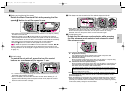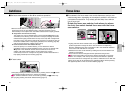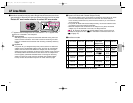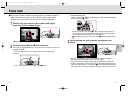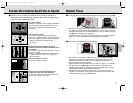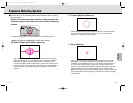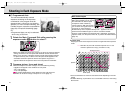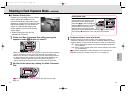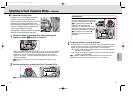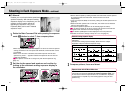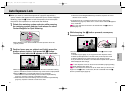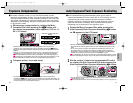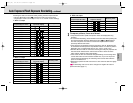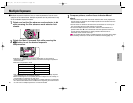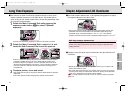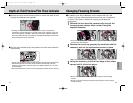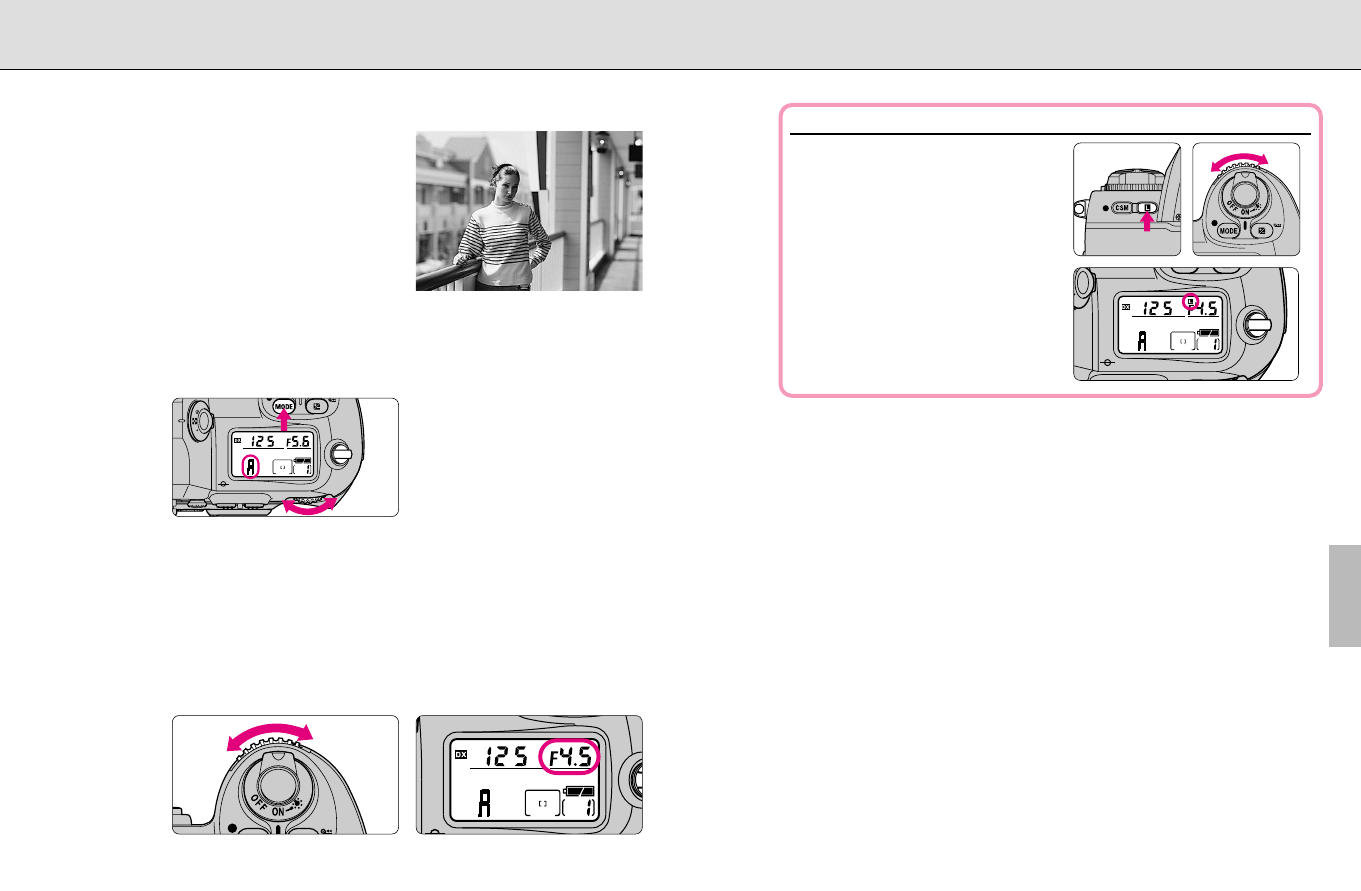
5150
Shooting in Each Exposure Mode—continued
Exposure
•£: Aperture-Priority Auto
Enables you to set the desired aperture
manually. The camera automatically
selects a shutter speed suitable for correct
exposure. By varying the aperture, and
thus controlling the depth of field, you can
sharpen the background and foreground,
or blur the background. In flash
photography, varying the aperture changes
the flash shooting distance (page 85).
1
2
Set the aperture by rotating the Sub-Command Dial.
Rotate the Main-Command Dial while pressing the
exposure mode ∆ button to select £.
•When CPU Nikkor lens other than G-type is not set to its minimum aperture
setting, ƒEE blinks in the LCD panel and viewfinder, and the shutter locks.
•When a non-CPU lens is attached, set/confirm aperture with the lens
aperture ring since ƒ-- appears instead of the aperture value in the LCD
panel and viewfinder.
· 22: Aperture can be set to change only with the lens aperture ring
(page 75).
· 12: Aperture can be set to change with Main-Command Dial (page 73).
Locking aperture
To lock aperture set at step 2, rotate
the Sub-Command Dial while pressing
the shutter speed/aperture lock button
— so aperture lock indication ¬
appears in the LCD panel and
viewfinder. To release the lock, rotate
the Sub-Command Dial while pressing
the shutter speed/aperture lock button
— so aperture lock indication ¬
disappears in the LCD panel and
viewfinder.
Compose picture, focus and shoot.
•When the subject is too dark or too bright, one of the following warnings
will appear in the LCD panel or viewfinder. (Electronic analog exposure
display will also indicate the amount of under- or overexposure.)
•H1: Select smaller aperture (larger f-number). If the warning indication
persists, use an ND filter.
•Lo: Select larger aperture (smaller f-number). If the warning indication
persists, use the Speedlight.
· 2: Shutter speed/aperture value displayed in the LCD panel and
viewfinder can be set to change in steps of 1/2 or one (page 71).
3
P500 (E) 02.12.27 5:48 PM Page 50



